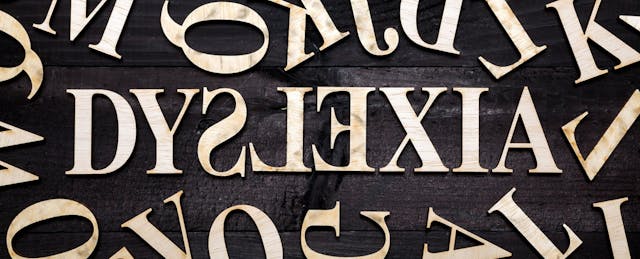It’s a common misconception that people who struggle with dyslexia also struggle with creative endeavors. Yes, many creative projects are tied to reading, writing and language skills—which dyslexics do struggle with— but not all forms of creativity stem from this particular skillset. One of the greatest forms of creativity, “making” with your hands, has evolved from traditional arts, like painting, sculpting and building, to technology-enhanced creation, like 3D printing. As more dyslexic people are taking control of their educational journey by playing up their strengths and steering away from a heavy focus on language, technological enhancements allow their creative opportunities to expand.
One in every five people suffer from dyslexia, a disability that inhibits an individual’s reading and writing skills. Before the definition of dyslexia was common knowledge, there was an overwhelming tendency for educators to assume that any student who could not keep up with the material just suffered from a lack of motivation. Teachers assumed students were not intelligent, or worse, lazy.
Beyond the educational setting, dyslexia often holds people back in their professional lives, starting in the job application process itself. Resumes and cover letters are a challenge for people with dyslexia, as spelling and organization are vital for these documents. Upon getting a job, dyslexics can have a difficult time keeping up if the role requires written assignments. They can struggle with simple emails, paperwork, contracts, policies, managing spreadsheets and databases—the list is endless. Additionally, they can encounter problems with organization and managing workloads and deadlines. All of these barriers make it much more difficult for those with dyslexia to follow a traditional pathway to success.
Due to the difficulty with standard learning skills like reading and writing, those with dyslexia must learn to harness their creativity in other ways. While it isn’t easy to completely shy away from these skills, working with technology like 3D printers helps dyslexics mimic similar thought processes. For example, 3D printing allows a creative individual to develop an original work, just as a writer might. Then he or she can review, edit and rework it until the desired outcome is me, similar to the editorial process for a written work. It allows those with dyslexia to experience creating a concept and revising it until the end goal is met, a thought process which often enables further innovation and creativity.
3D printing lets dyslexics leverage their strengths, like spatial awareness, which is critical to effectively make, produce, and explore with 3D printers during the design process. One needs to be able to envisage the object they’re making and how the individual parts of it will fit together to form the end product. Dyslexics are often quite intuitive when it comes to figuring out how to do things, as they typically have a nuanced view of the bigger picture and are able to discover outside-of-the-box solutions to problems. This mindset suits 3D printing, as those with dyslexia are equipped to handle the ins and outs of the technology to turn their own ideas into reality without ever having to write a single word.
Many do not realize that there is no lack of creativity among people with dyslexia. You might be surprised to learn that a number of overwhelmingly successful individuals—including Steve Jobs and John Lennon— struggled with the disability. Today, there is a great emphasis on ensuring people with dyslexia develop the same skills as traditional learners at a young age, and are able to find success as they move forward in their careers. Ultimately, engaging technologies, like 3D printing, help to provide those who may struggle in the traditional classroom with an alternate path to creativity, innovation, and success.


